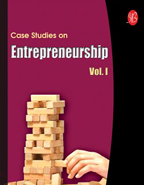|
Executive Interviews:Interview with Vijay Govindarajan on Reverse Innovation
January 2010 - By Dr. Nagendra V Chowdary
 Vijay Govindarajan
Vijay Govindarajan Professor of International Business and the Founding Director of the Center for Global Leadership at the Tuck School of Business at Dartmouth College. 
While highlighting GE
Healthcare’s China experiment
(compact ultrasound effort), you have
propounded five critical principles
behind local growth team (LGT)
model? Can you highlight the
criticality of LGT model in a
successful reverse innovation
paradigmandwhat are the five critical
principles behind LGT model?
The most important barrier in reverse
innovation is the organizational
barrier. In order to overcome this
organizational challenge,
multinationals must embrace a new
management model; we call this
Local Growth Teams. LGTs are based on several principles. First, LGTs
must have localized resources and
localized decision-making power.
Second, LGTs must take a zero-based
approach to innovation. Third, the
LGTs will have to be connected to
global technology and global
resources in order to benefit from
economies of scale. Fourth, the LGTs,
even though they are small, should
still report to a fairly senior executive.
This is to make sure that the
resources for the LGTs are protected.
Fifth, the LGTs should be evaluated
on a different performance scorecard.
After all, innovation implies
experimentation and experimentation
obviously has unknown outcomes.
Therefore, LGTs should be evaluated
on their ability to learn not their
ability tomeet the short-termfinancial
targets. What kind of companies are best
suited to pursue reverse innovation
impeccably?
Companies which are ideally suited
for reverse innovation would be
consumer products companies, like
P&G, Unilever, and Nestle.
Consumer companies obviously are
most affected by the unique
characteristics and income disparities
in countries like India. What is the role of leadership in
nurturing a futuristic and impending
culture of reverse innovation,
especially for MNCs from developed
countries?
Leadership has to play a critical role.
CEOmust travel to emergingmarkets,
see firsthand what is possible, and
convince the organization about the
potential of reverse innovation. What do you think are the
challenges and precautions for MNCs
seriously looking at reverse
innovation as their next growth
driver?
The reverse innovation is as much a
cultural transformation as it a strategic
transformation. Therefore the biggest
barrier would be the organizational
barrier. In order to overcome this multinationals must develop leaders
with a different orientation and global
mindset. These leaders should be
able to operate in multiple cultures
with ease. Therefore, multinationals
should practice things like job
rotation, strategic EXPAT programs,
locating the headquarters of certain
businesses in emerging markets,
recruiting emerging markets
nationals, and appointing them to
senior positions in companies. In
order for reverse innovation to be
successful, the CEO needs to play a
role showing 100% commitment to
this concept. A lot has been written about
emerging giants from emerging
economies – Haier, Lenovo, TCL,
Alibaba.com etc., from China; Bharti,
Tata Sons, Mahindra & Mahindra,
TCS, Reliance, etc., from India, and
many more companies from other
emerging economies. What does the
rise of these emerging giants mean for
global business? Will they trigger off
any geo-political war?
There are a number of emerging
market giants like Haier, Lenovo from
China; and Tata, Mahindra &
Mahindra from India. These
companies are good for global
competition, since they force
American multinationals to take
reverse innovation seriously. Many Chinese companies have
been accused of succeeding by taking
an existing technology and then
tweaking it for a local audience –
Tencent Holdings Ltd., Alibaba
Group, Baidu.com, Baidu
Encyclopedia, etc. What does this
mean for MNCs operating and
wishing to operate in China?
In countries like India and China,
reverse engineering and imitation will
no longer do. Perhaps these countries
grew in the past by producing
produces at lower cost by exploiting
their low cost labor. However going
forward, these countries can prosper
only by closing their innovation gap.
Thus, reverse innovation would become extremely critical in order to
createmarkets in countries like China
and India. What kind of innovation –
product, process, business model or
organizational – do you think should
emerging giants from emerging
markets are capable of and should
focus on?
Giants from emerging markets should
focus on all kinds of innovations; that
would include product innovations,
process innovations, distribution
innovations, business model
innovations, and platform
innovations. Concepts like Tata
motors $2000 car is a good example of
innovation on many fronts. Clearly it
is a new product, but it also has
process innovations, but most
importantly it is also a distribution
innovation. After all the way Tata
motors is going to distribute the
automobile is to produce the
automobile in modular form and
send those kits to local entrepreneurs
who will assemble the product and
sell it. This is a very important
commercial innovation. While writing an editorial page
article, R Gopalakrishnan, Executive
Director, Tata Sons – in Business
Line, “Destiny Awaits Innovative
India”, November 21, 2009 – said
that, “... innovation requires 4 Cs:
chaos, creativity, communication to
generate ideas and channelization to
convert theminto real products. India
has the first three, but needs to
strengthen the fourth.” What it takes
to strengthen the fourth element of
successful innovation breeding
capability of India Inc.
I completely agree that in order for
innovations to happen, execution is
the most critical. People too often
confuse innovation with creativity.
Innovation is not creativity,
innovation is commercializing
creativity. Thus the execution
challenge is the biggest challenge. In
fact, Thomas Edison put it very well,
he said “Innovation is 1% inspiration and 99% perspiration”. Thomas
Edison should know because he was
the best innovator of all times. The
1% inspiration is the creativity part,
the 99% perspiration is the execution
part. Execution involves assembling
the team, building the capabilities,
setting the right performance
scorecard, allocating resources etc.
That is the key to success in
innovation. India has been a hotbed
(especially during the last five years)
for many successful social
entrepreneurial innovations. Do you
think that shall be the order of the day
where many entrepreneurial clusters
thrive?
I believe that India can lead the world
in social innovation. After all, India
has so many social problems, like
health, sanitation, education, energy,
etc. Solving these social problems
would require breakthrough
innovations. India is ideally
positioned in this area because India
faces these problems more so than
developed world. Therefore, India
can actually lead the world in solving
and coming up with sustainable
solutions which can then apply in
developed countries.
The Interview was conducted by Dr. Nagendra V Chowdary, Consulting Editor, Effective
Executive and Dean, IBSCDC, Hyderabad. This Interview was originally published in Effective Executive, IUP, January
2010. Copyright © January 2010, IBSCDC
No part of this publication may be copied, reproduced or distributed, stored in a retrieval
system, used in a spreadsheet, or transmitted in any form or medium – electronic,
mechanical, photocopying, recording, or otherwise – without the permission of IBSCDC. |


